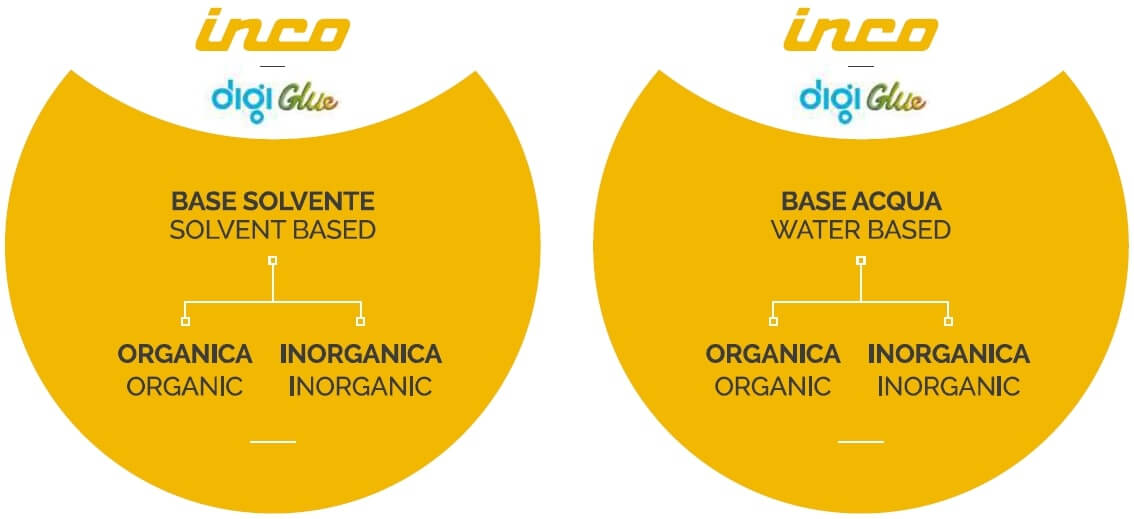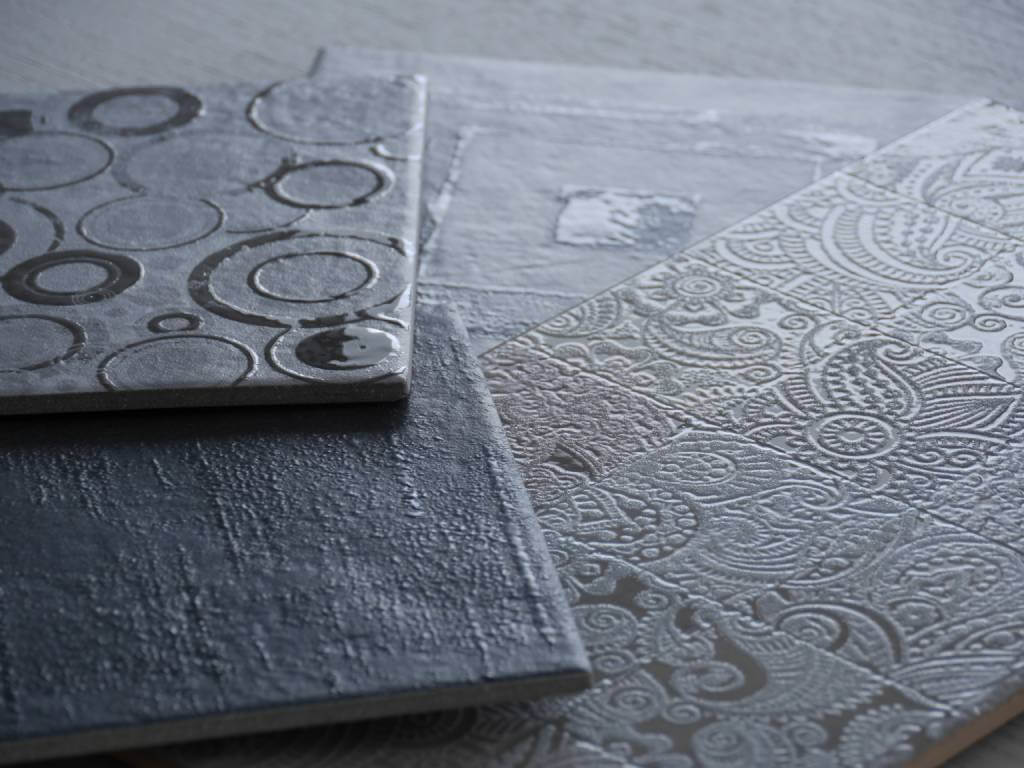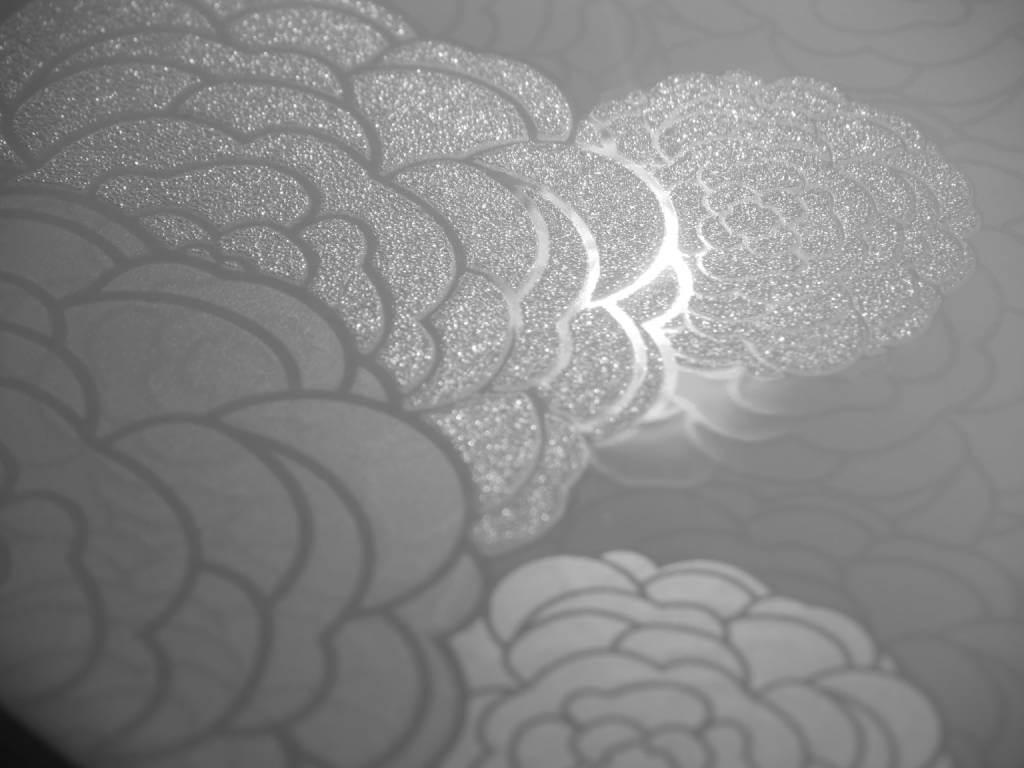Digital ceramic glues for inkjet application are the latest version of a technology that has frequently been used in the past for ceramic tile decoration.
Essentially, digital ceramic glues or adhesive inks are inkjet inks for drop on demand technology that enable glass grits or powders to adhere to the tile surface according to a digital design.
Due to their special polymer content, they have a bonding or gluing capacity when applied to the tile surface. But to ensure excellent technical results, these polymers must guarantee perfectly stable bonding of the applied grits through to the firing/melting stage.
At the same time they must not give rise to film-forming effects as this would risk damaging the printhead.
Clearly, this solution offers exceptional decorative potential. As the glues are applied according to a digital design, they can be synchronised with both the coloured graphics and the material effects.
This overcomes the problem of anonymous, flat-looking digital printing and allows ceramic products to acquire low-relief effects and unique contrasts of light and colour.
These products can be loaded on the last bar of traditional decorating machines, if available, followed immediately after the exit by a grit application machine.

For greater flexibility of the system, as an alternative it is recommended to use new generation stand-alone machines with limited cost (a single machine consisting of a printing bar followed by a grit applicator, in some cases incorporated).
Due to its small size, this machine can be positioned at the point on the production line considered most appropriate.
Digital ceramic glues can be used on all types of ceramic materials, including porcelain, white body, red body, large slabs, etc., either for full-field applications (over the entire surface of the tiles) or solely for decorative graphic effects.
Depending on the intended use, consumption can vary from a few grams per square metre up to 50-80 g/m2 for full-field grit applications.
Although digital glues have evolved significantly over time in step with advances in technology, both the older and more recent versions are relevant today and each offer different characteristics and advantages.
Digital glues are divided into the two large categories of solvent-based and water-based products, which in turn are divided into organic and inorganic
Solvent-based means products that use solvents, such as oils, which are not miscible with water and have a high lubricating power.
Water-based means products with a high water content as well as water-compatible and water-miscible solvents. A glue is defined as organic when it consists entirely of intermixable organic solvents/additives and presents as a clear, transparent liquid.
It is inorganic if it contains a fraction of suitably milled and stabilised inorganic matter, with sub-micron particle size distributions (as is the case with all ceramic inkjet inks).
So what are the main characteristics of the various glues currently on the market?
In chronological order, the first type to be developed were organic solvent-based glues, which consist entirely of completely intermixable organic chemical materials that are incompatible with water, generally oils and polymers.
Thanks to the high degree of lubrication and complete homo geneity typical of their constituent organic substances, they eliminate the problems that typically arise with conventional ceramic inks such as sedimentation, open time and filterability They allow the printheads to be kept in excellent condition without the need for any special care or maintenance.
As they do not contain inorganic material, the colour intensity of the underlying designs is unaffected.
These types of products are recommended for users looking for a solution that is suitable for any kind of printhead and which combines excellent in-machine performance with good bonding power, as well as the high flexibility necessary to achieve material effects without sacrificing definition.
Inorganic solvent based glues are true ceramic inkjet inks containing an inorganic material milled to a particle size distribution of less than a micron.
Inorganic inks with different percentages of inorganic matter can naturally be chosen according to requirements in terms of application and colour intensity.
But what are the benefits of using inorganic material in a glue? There are three main advantages:
This type of product is recommended for users who need a solution that is suitable for any type of printhead and com-
bines outstanding machine performance with optimum bonding power and excellent grit application.

Over the years, problems relating to emissions of harmful substances in flue gases along with odours generated by the combustion of these solvents have driven research into new solvent phases capable of solving these two issues while maintaining the products’ excellent technical characteristics. This led to the development of eco-friendly formulations designed to reduce the environmental impact of digital glues, especially for high weight applications.
This initially involved using new types of solvents capable of reducing the quantities of harmful and foul-smelling organic substances generated during combustion.
Then at a later stage, the development of innovative printing technologies allowed water-based inks to be used.
The new printing technologies available on the market today ensure excellent jetting and in-machine performance.

This was initially achieved thanks to the new water-compatible printheads, then as a result of printer developments in terms of the ink heating/cooling system, the automatic cleaning system, and the ink circulation/de-airing system.
As mentioned above, the water-based adhesive ink may be organic or may contain a fraction of inorganic material, as in the case of solvent-based glues.
The big difference compared to the respective solvent-based versions is that water-based inks ensure a significant reduction in atmospheric emissions of organic substances and odours, even compared to versions developed with eco-friendly solvents.
One very important advantage of water-based adhesive inks compared to analogous solvent-based products is the fact that they have a greater affinity with other ceramic applications and for this reason allow for unmatched printing definition.
Inco offers a wide range of solvent-based adhesive inks (DigiGlue S) and water-based adhesive inks (DigiGlue W) containing different percentages of inorganic material.
This enables them to meet any production requirement in terms of environment/emissions, technical/application aspects and colour intensity.
With such a comprehensive range and the technical expertise of its staff, Inco is able to recommend the most suitable solution for any ceramic company.